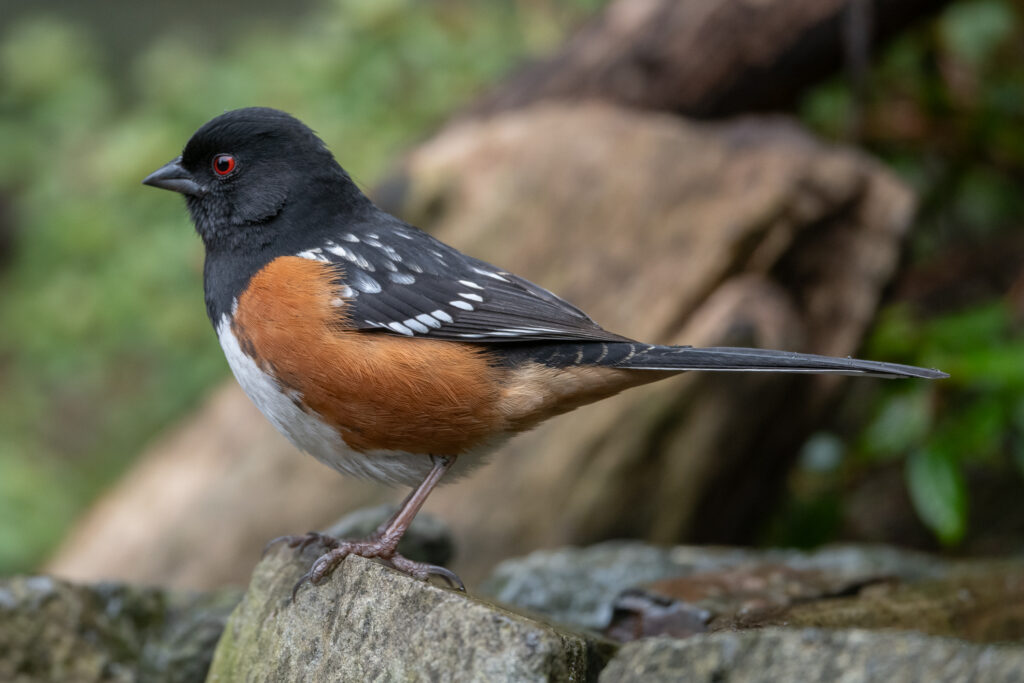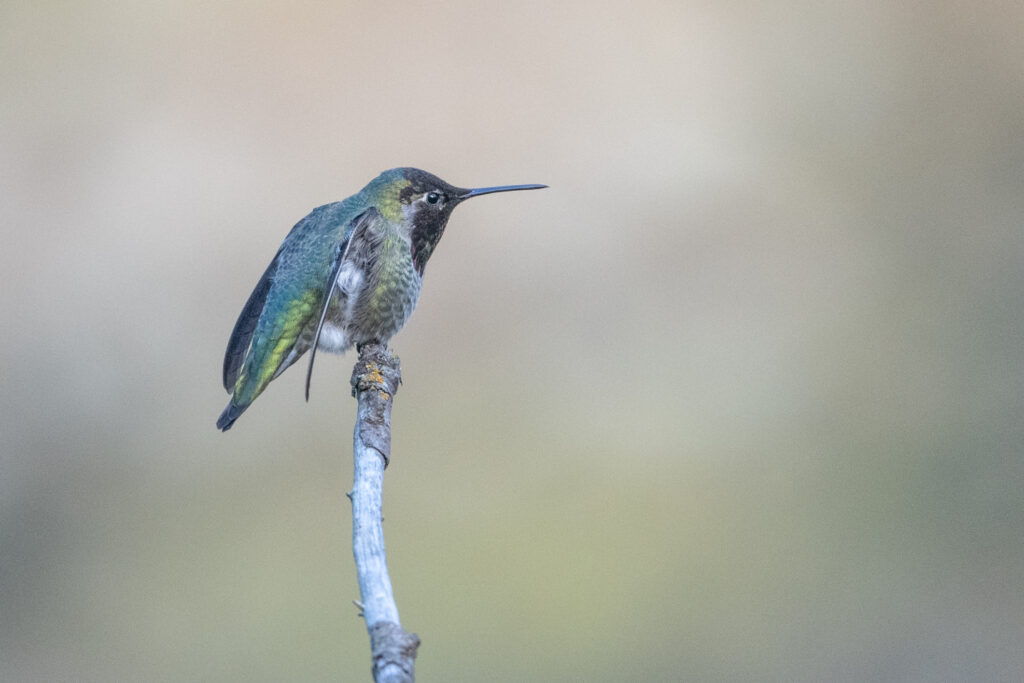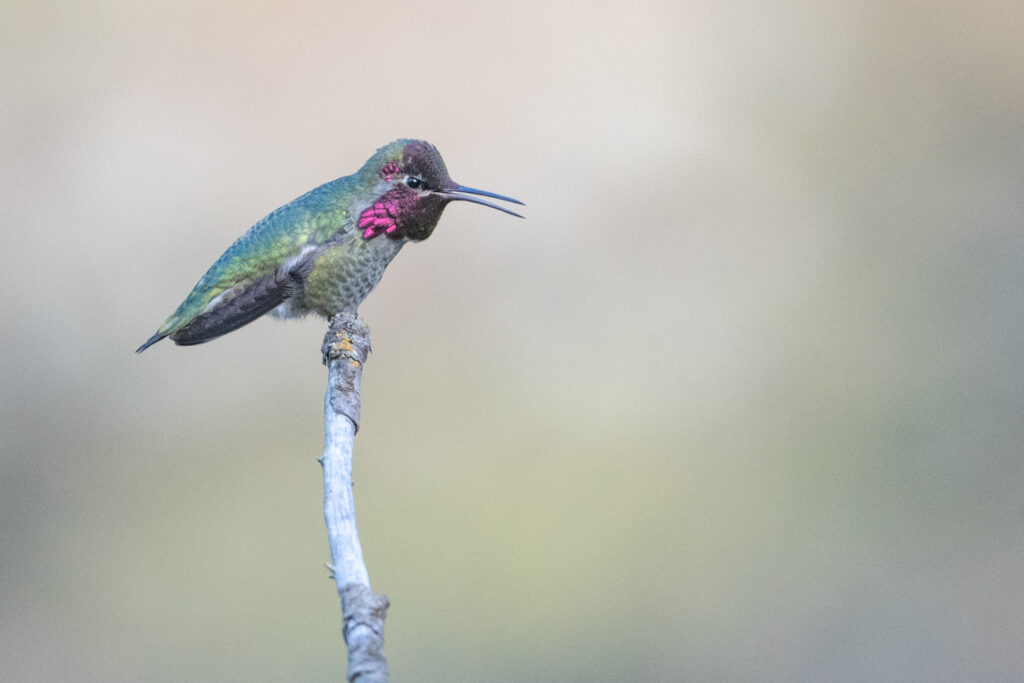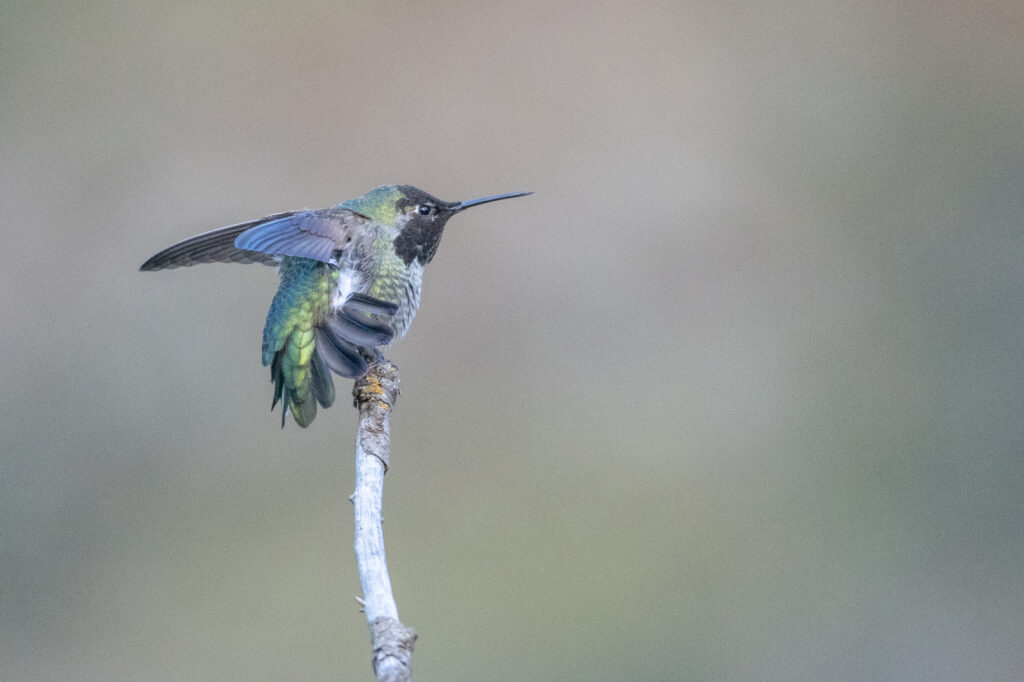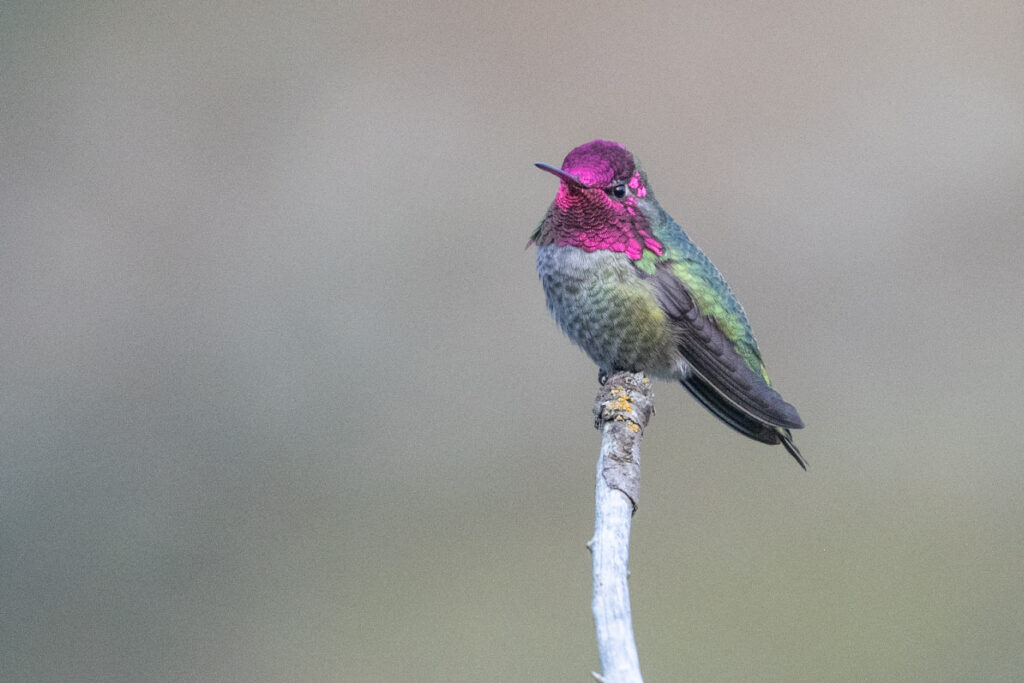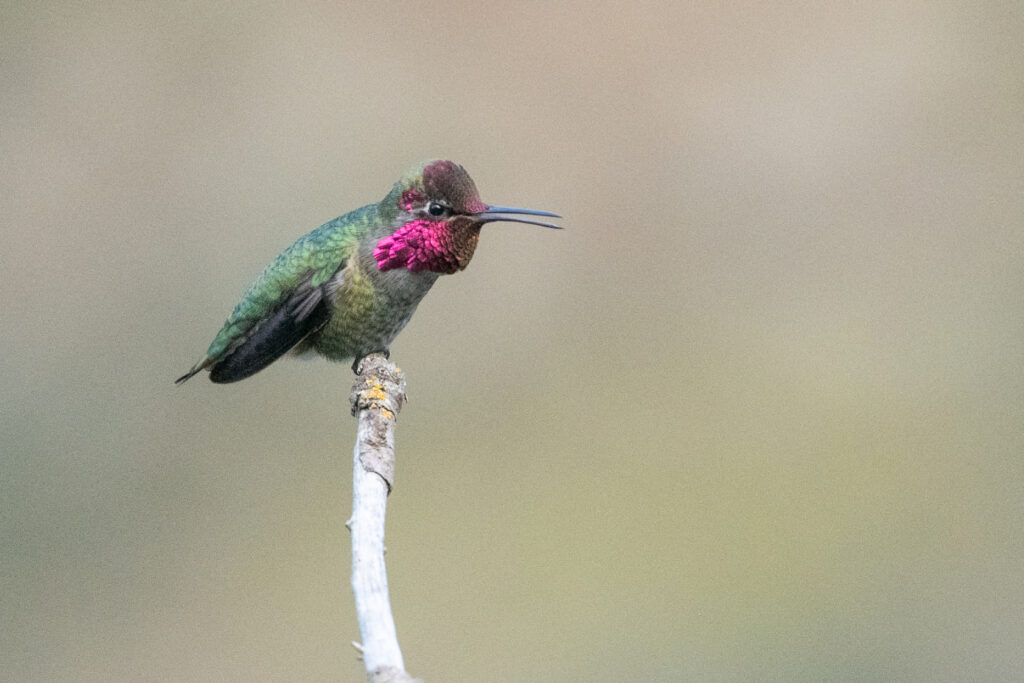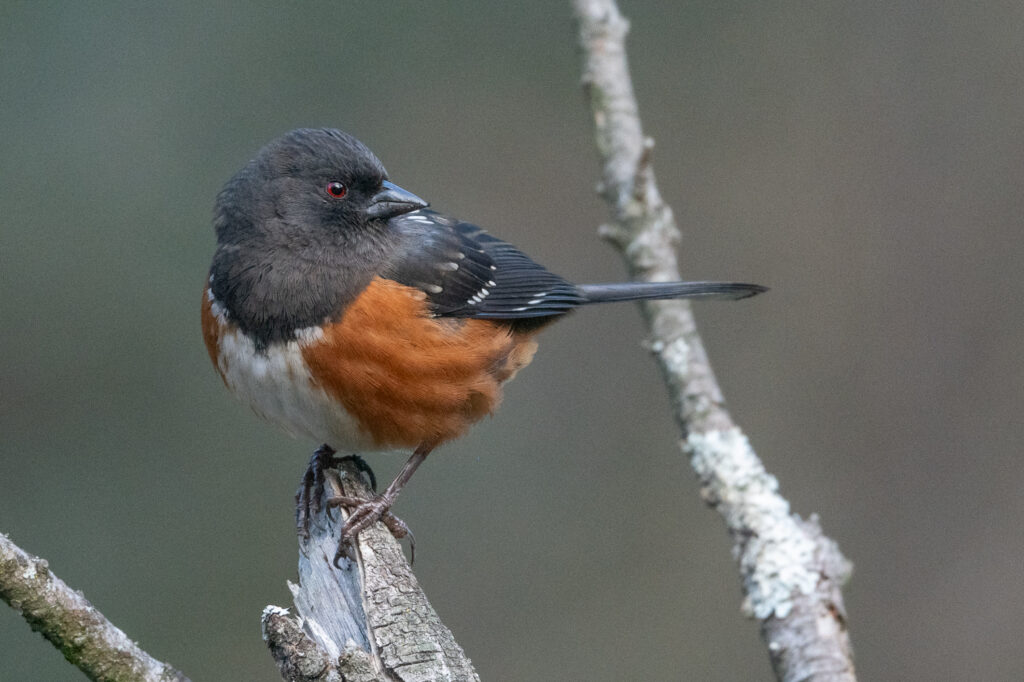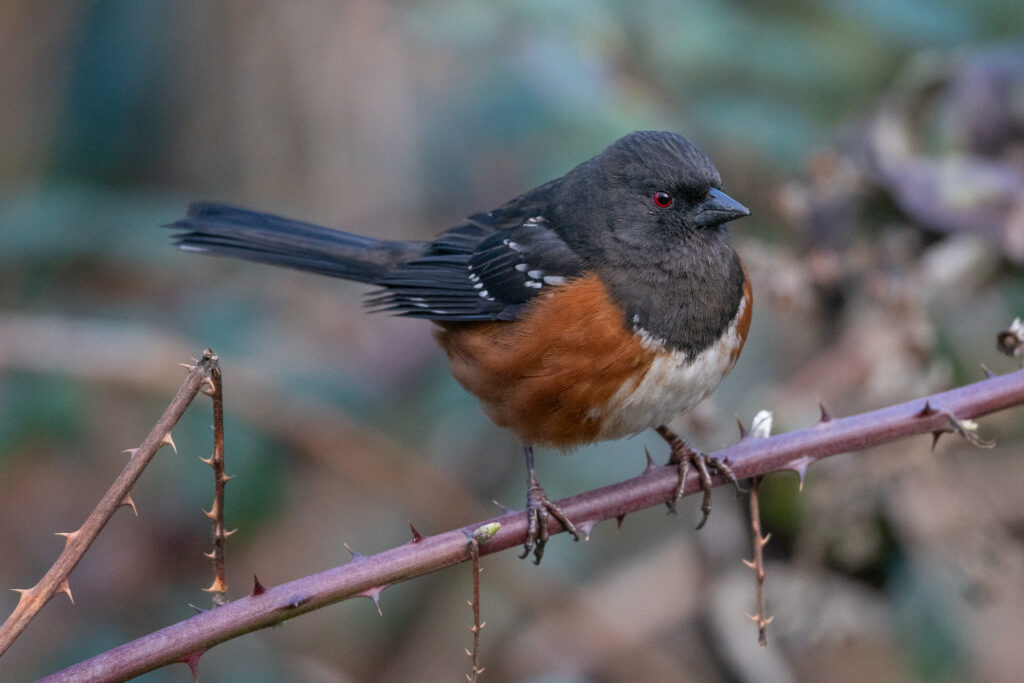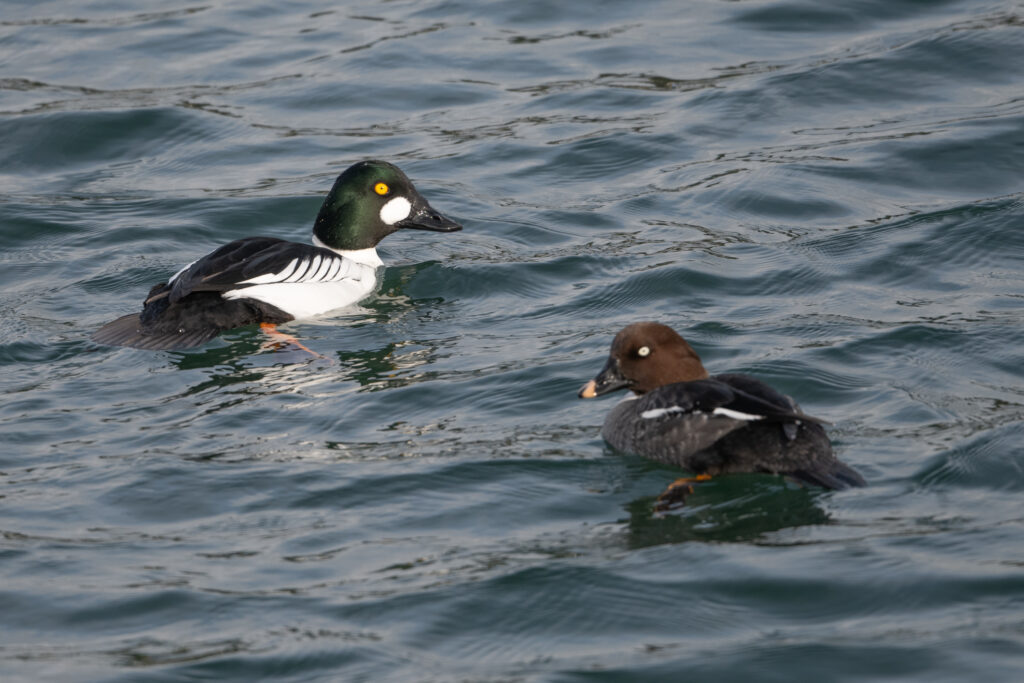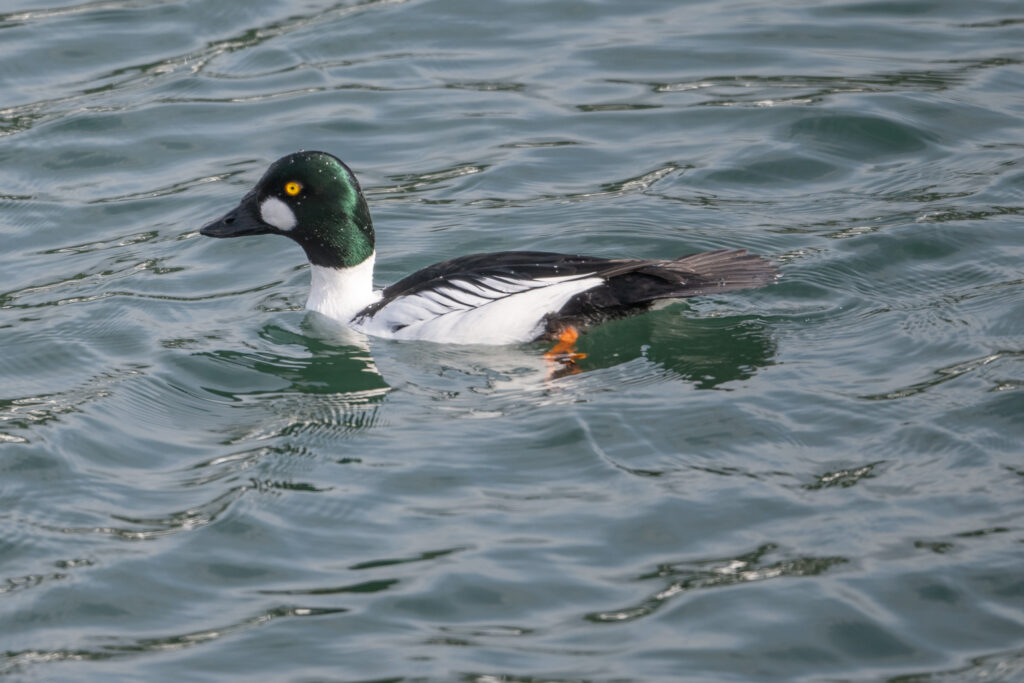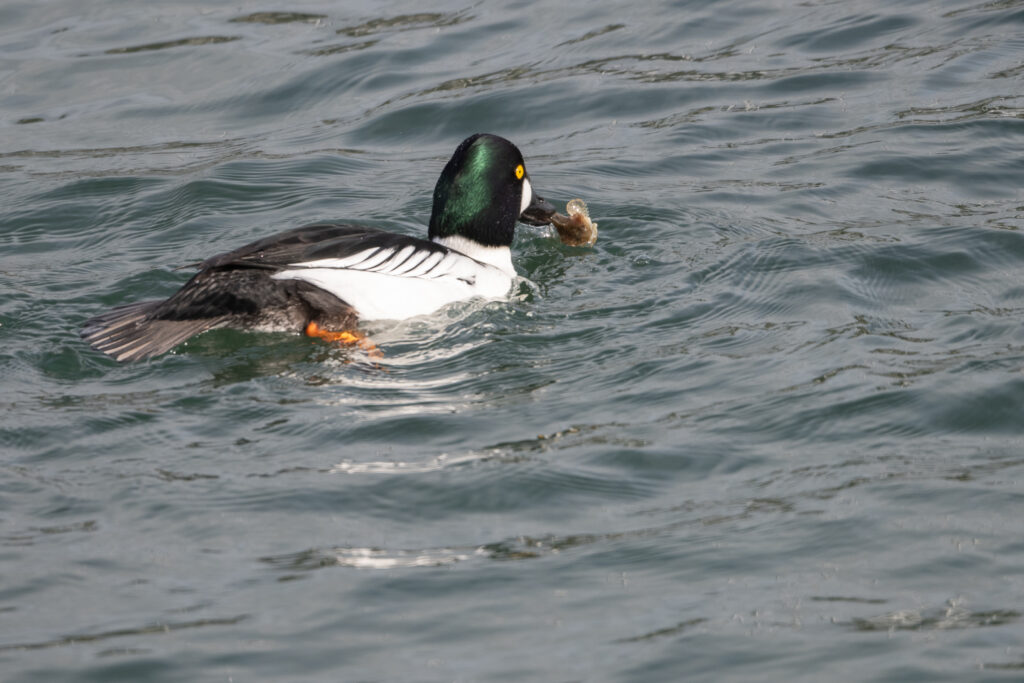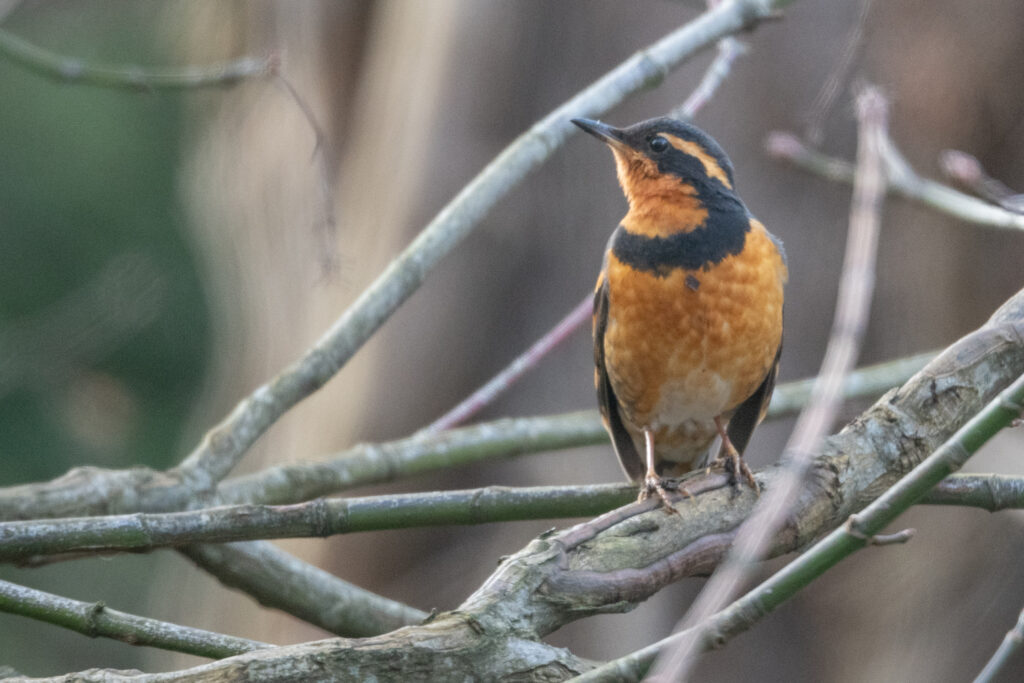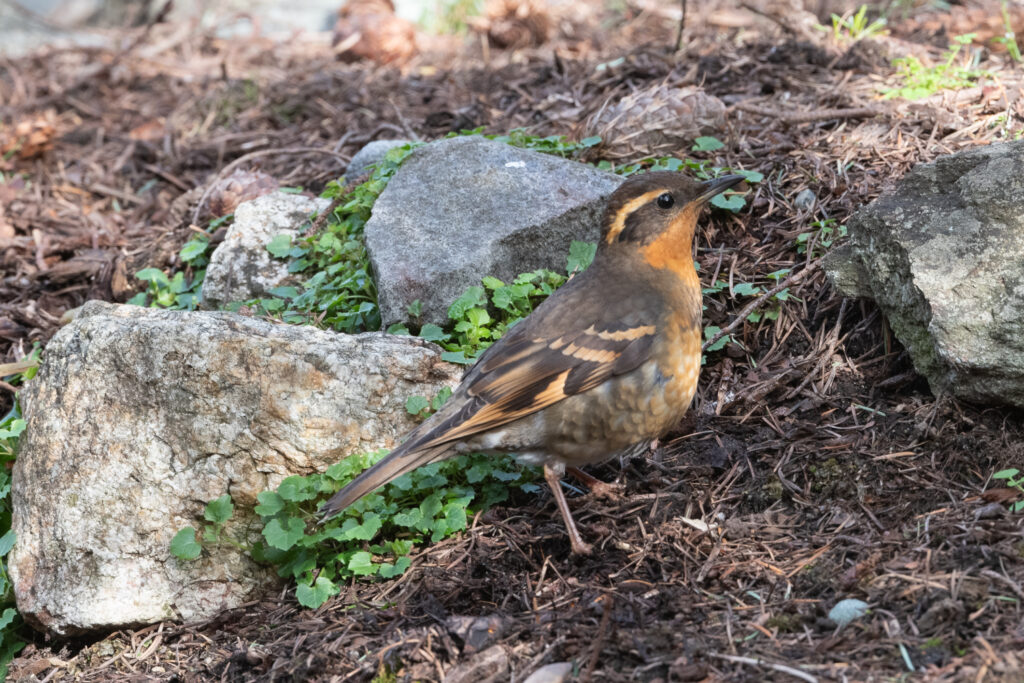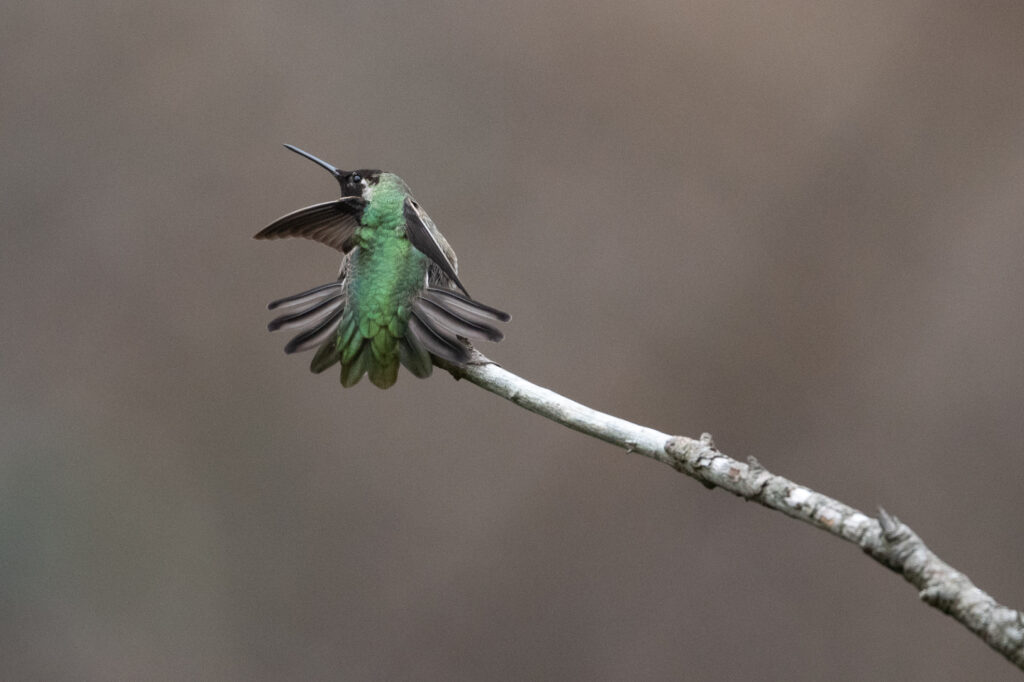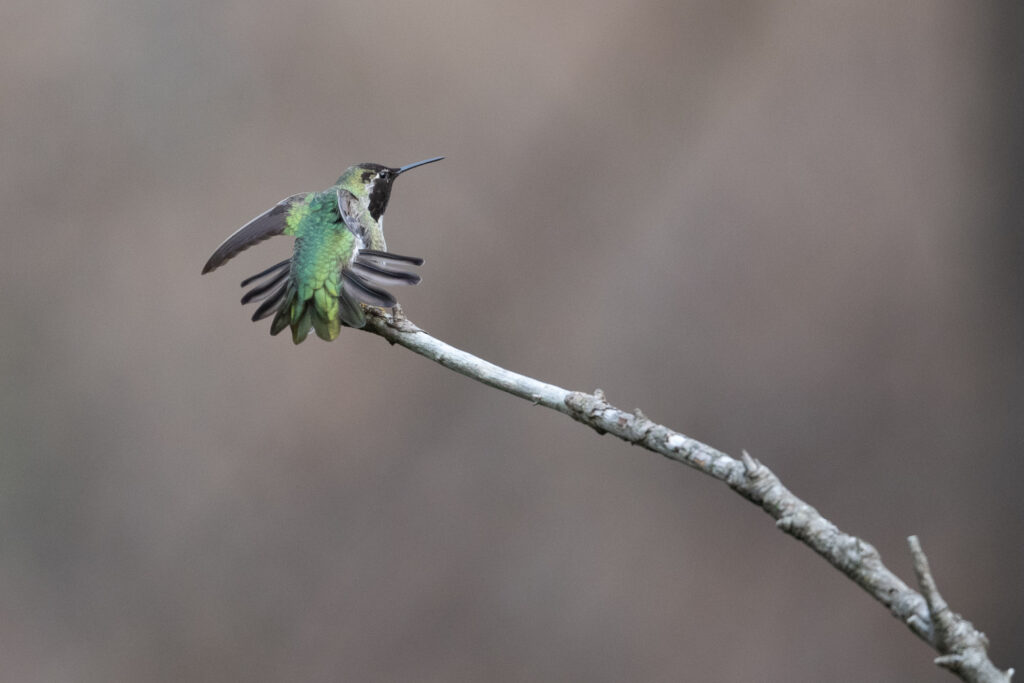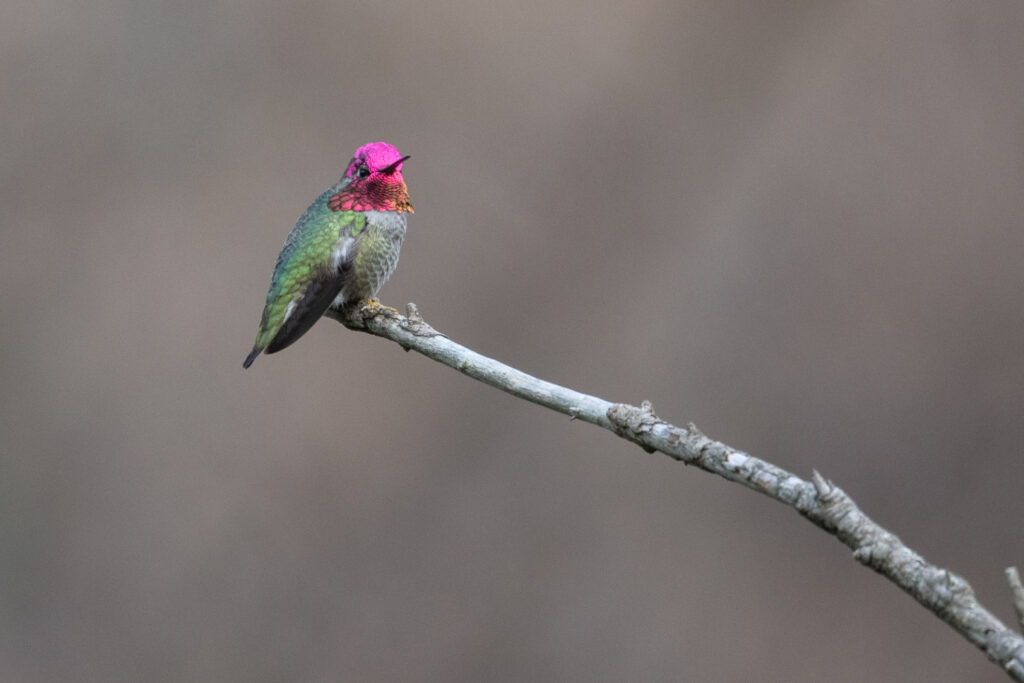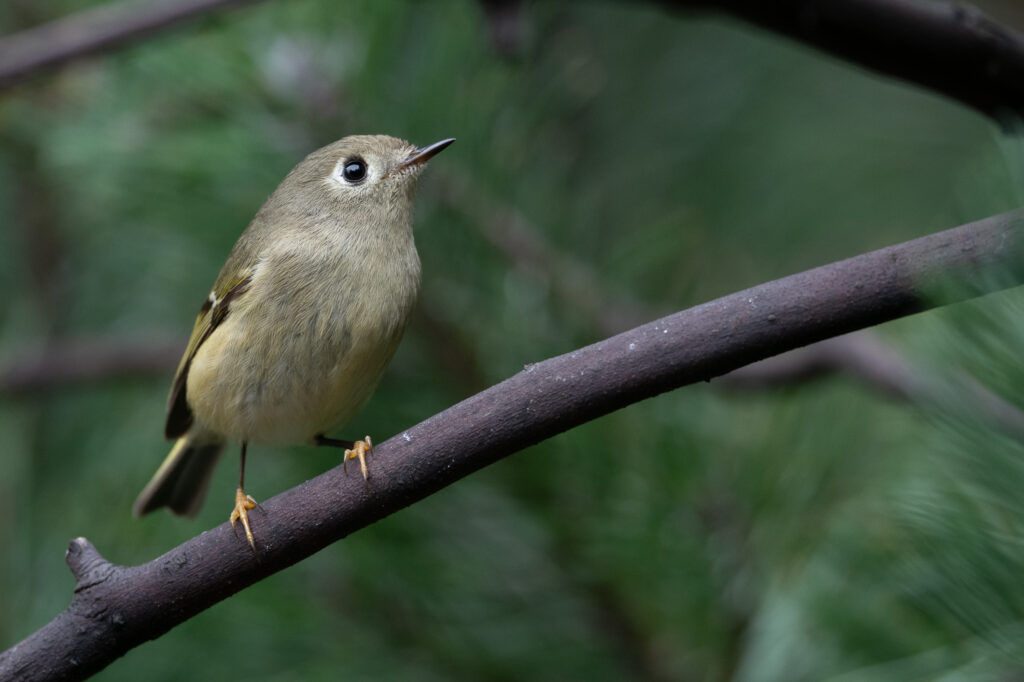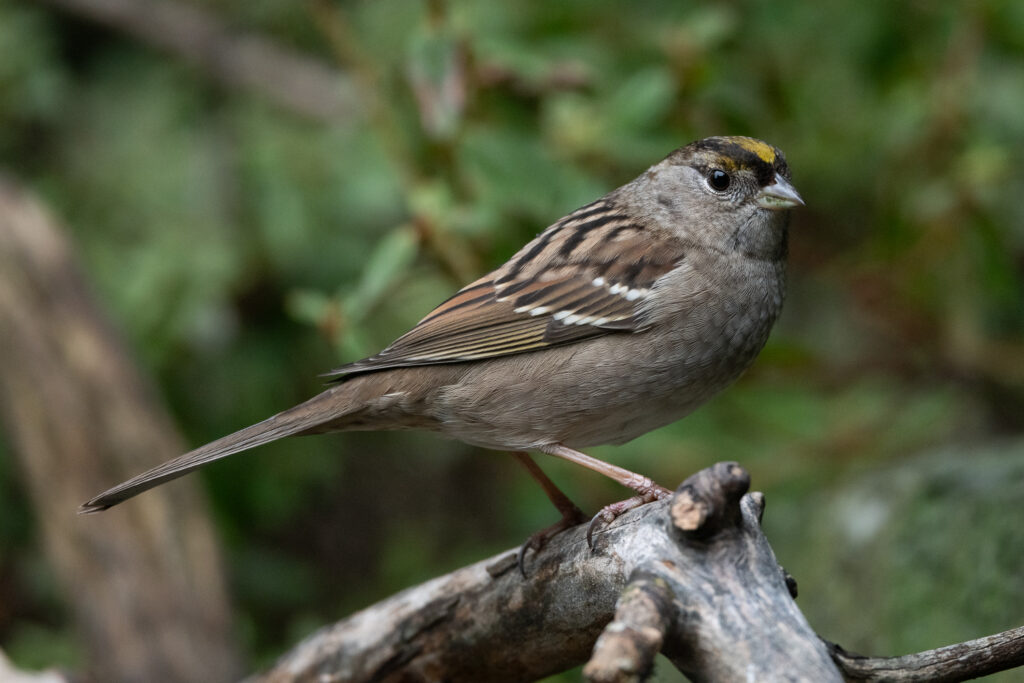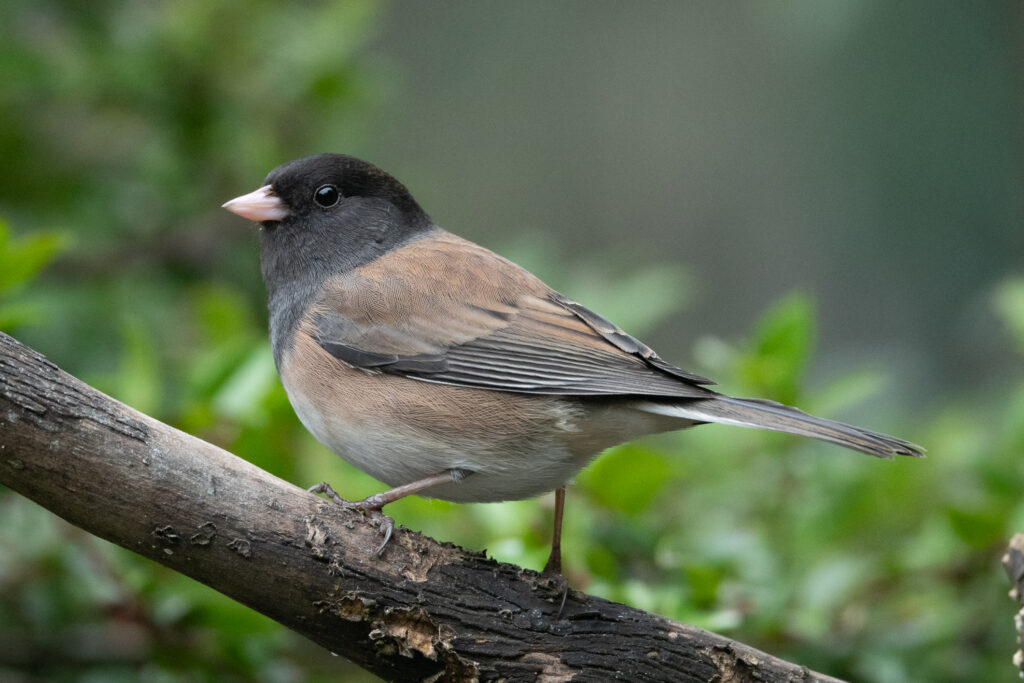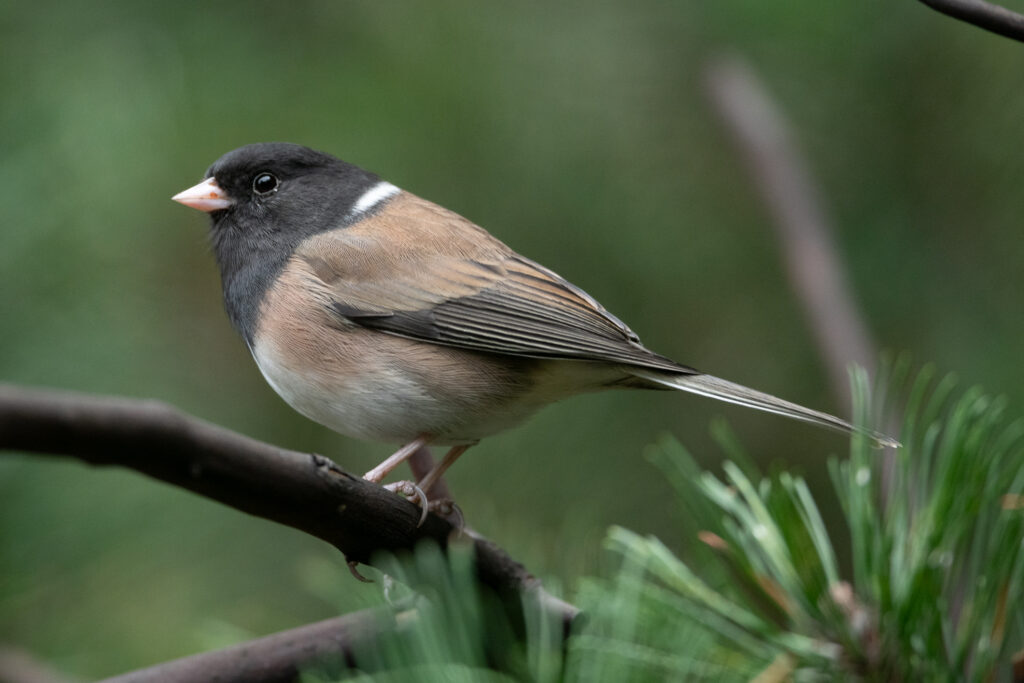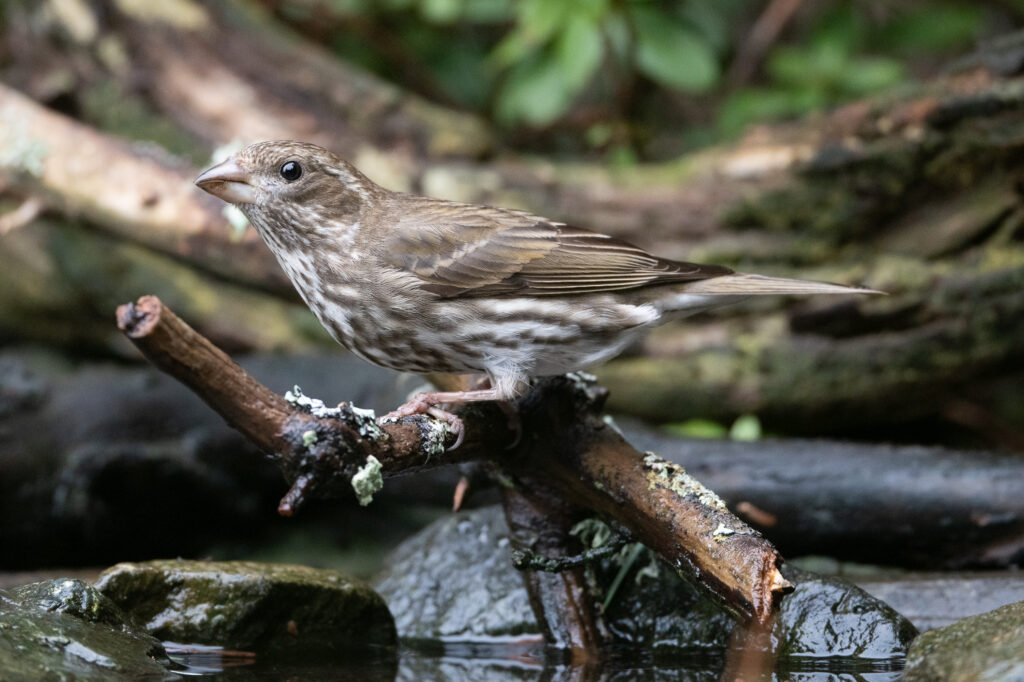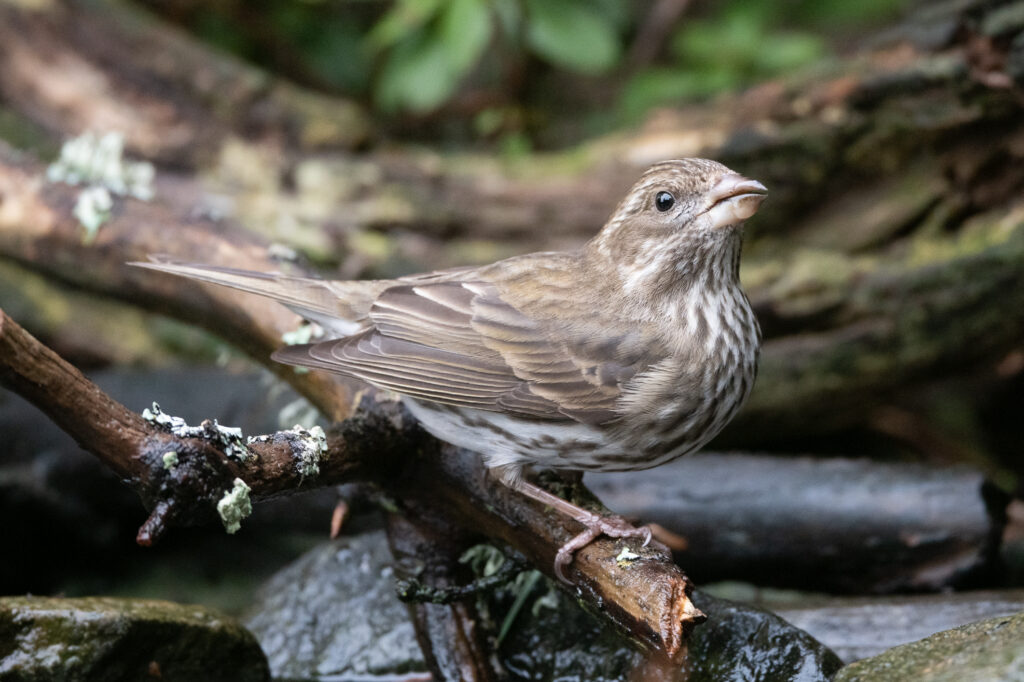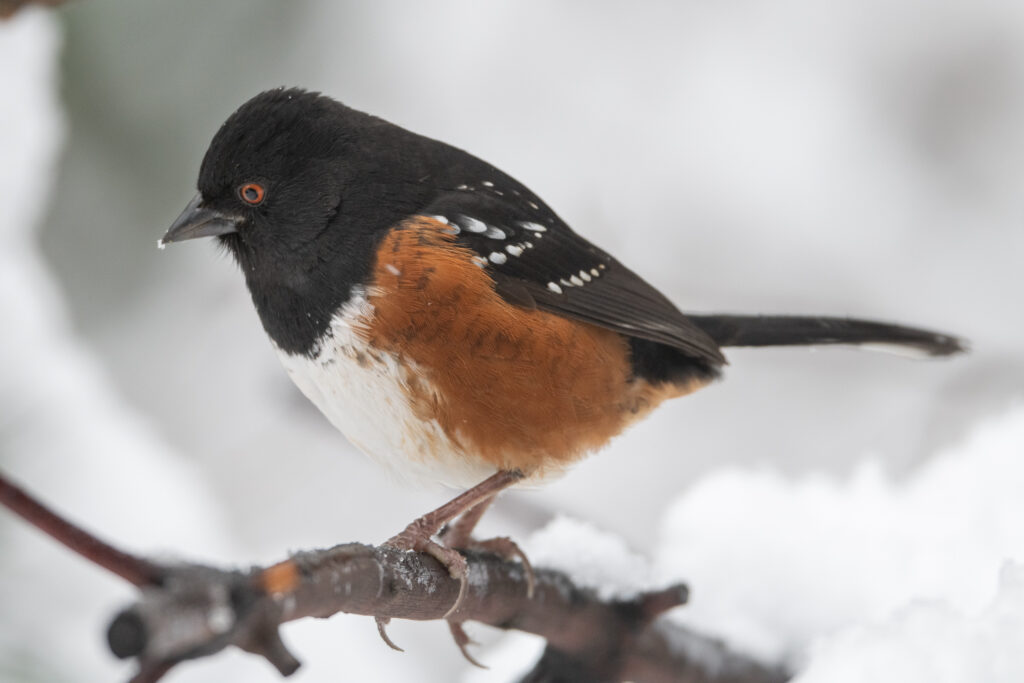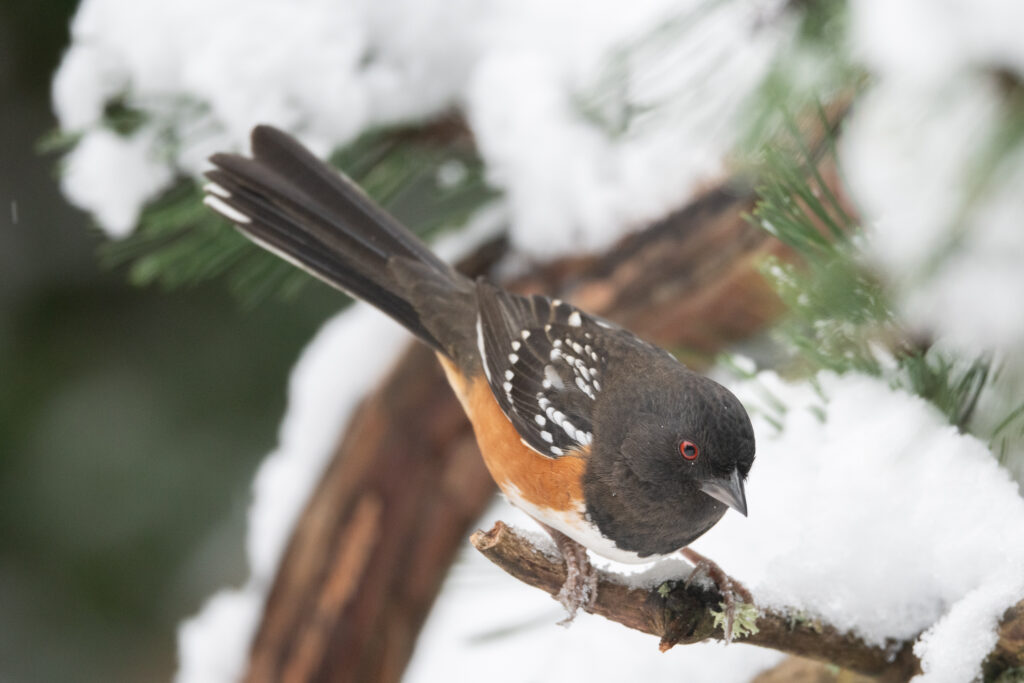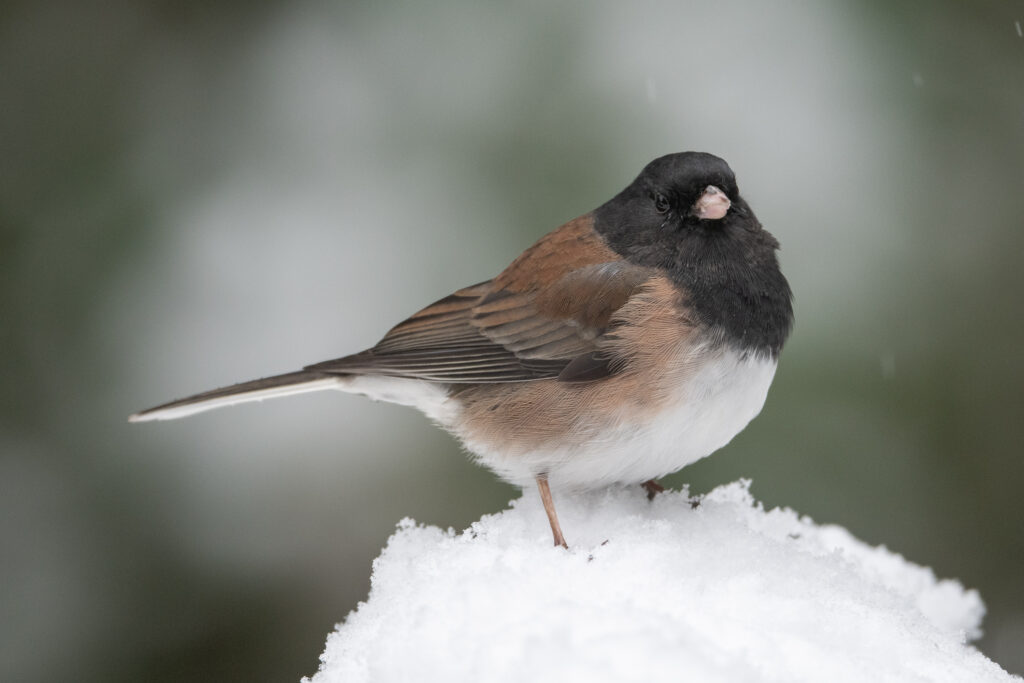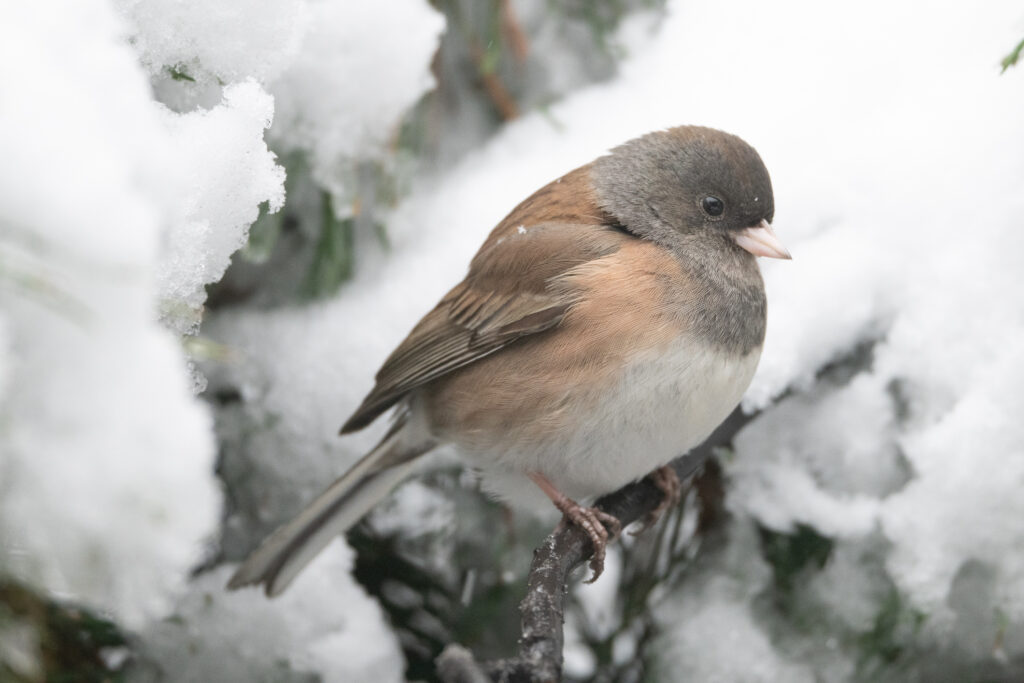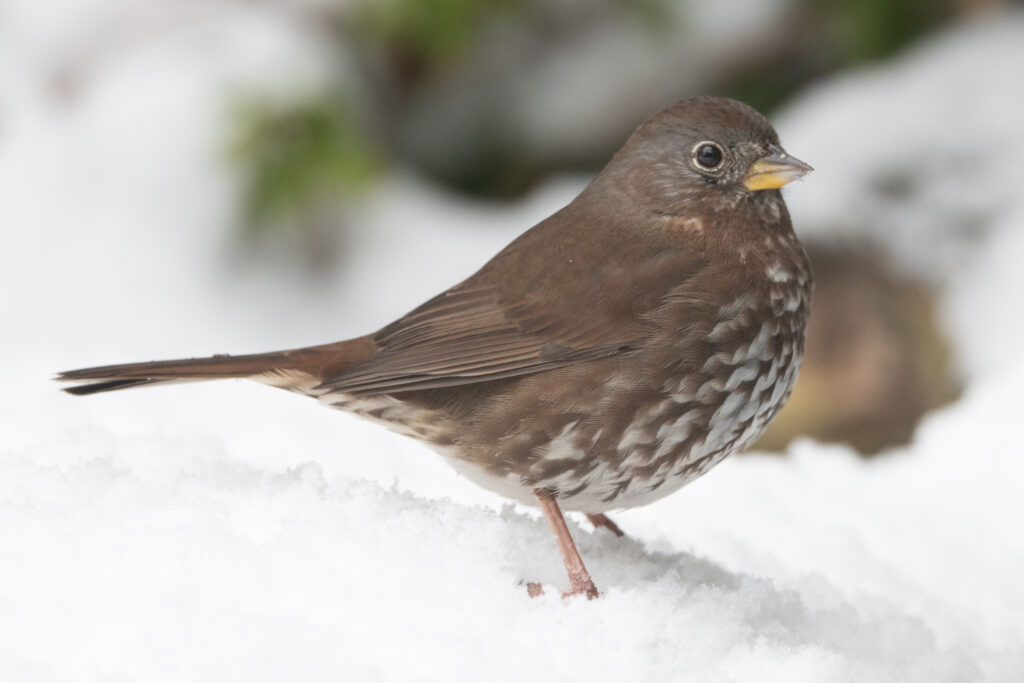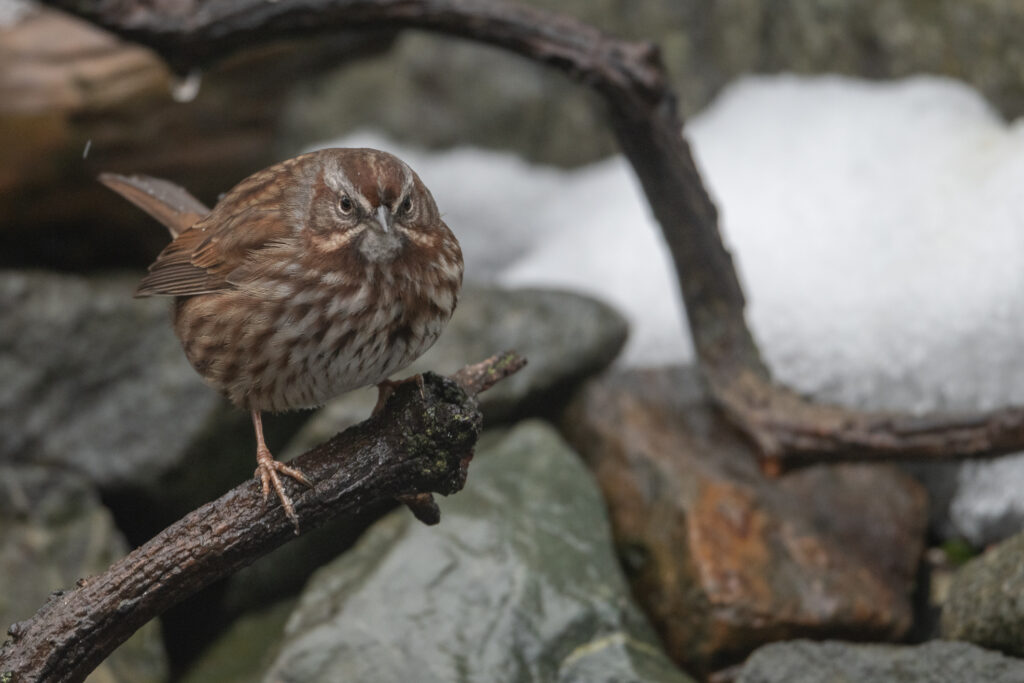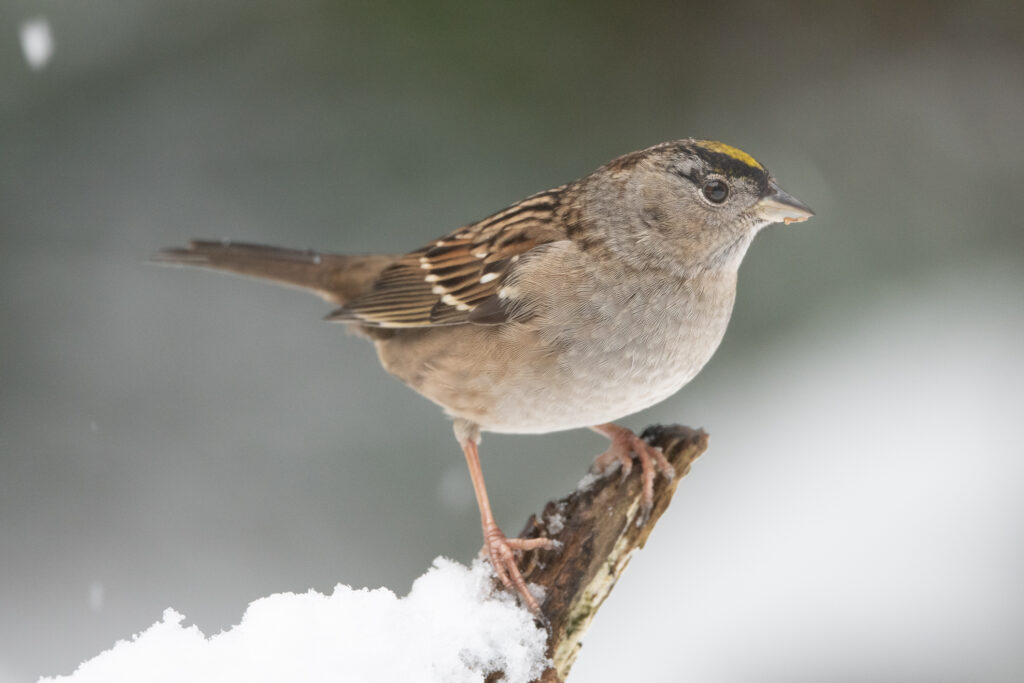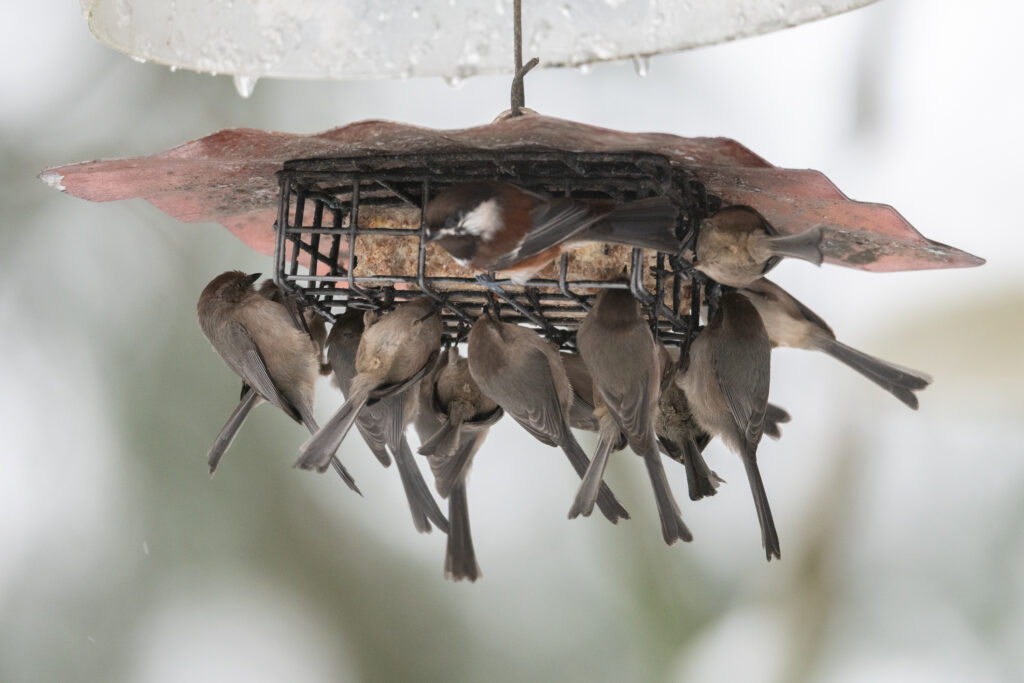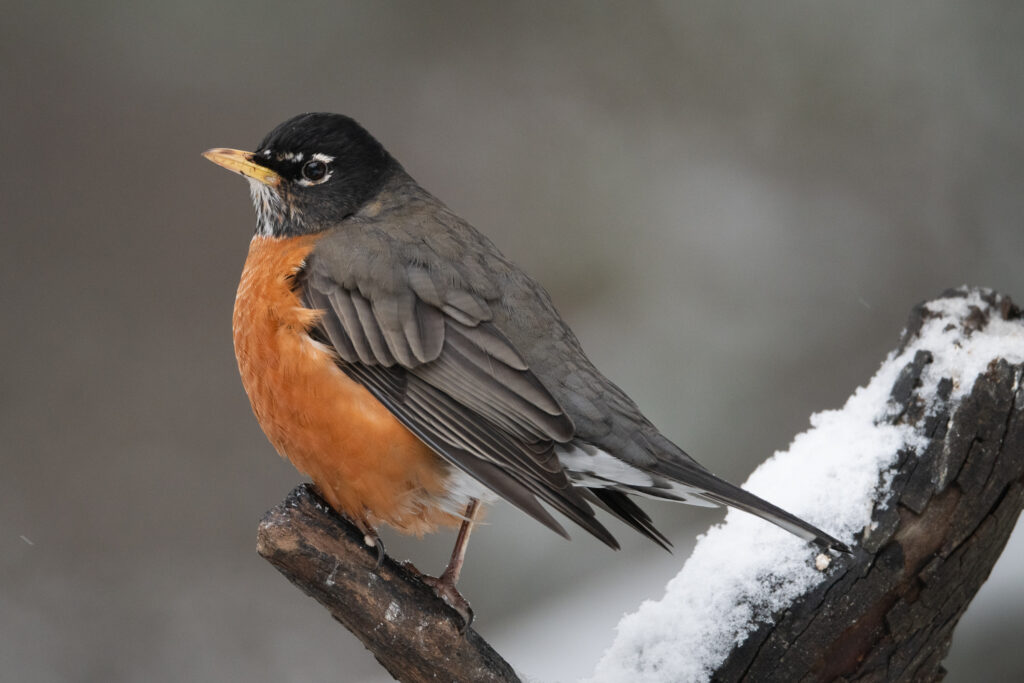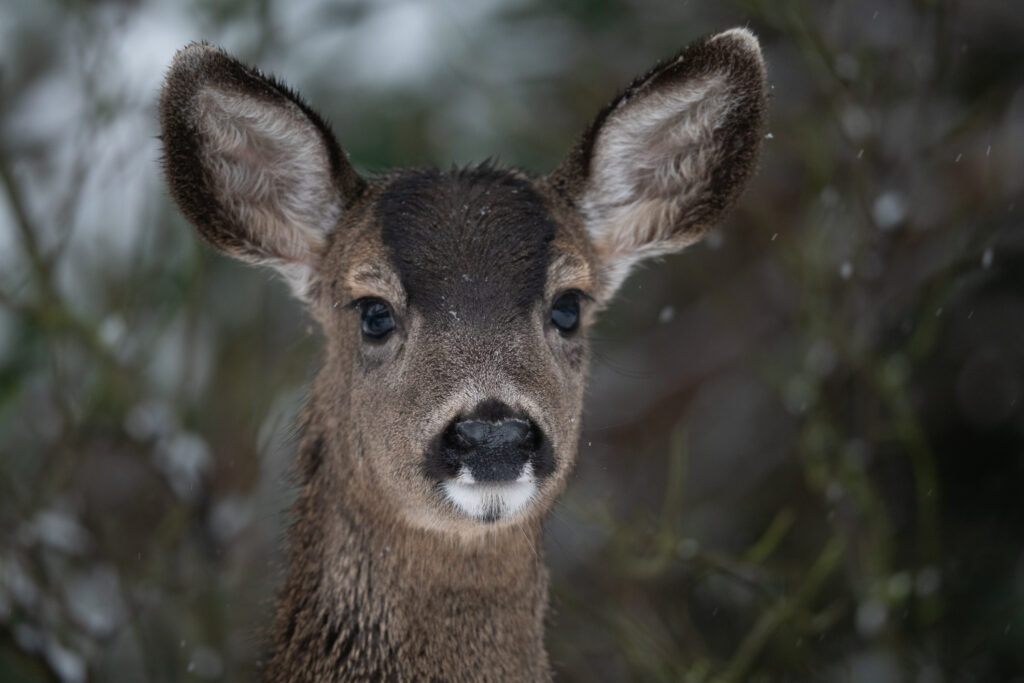I spent more time in the yard on February 18, 2024, prompted by a Golden-crowned kinglet (probably a female) flying down right beside me when I was filling birdbaths. The birds are difficult to photograph due to their activity level and the fact that they frequent two of our bird baths where photography is difficult. However this one (or another) came to this water feature later for a drink and I managed a few photos.
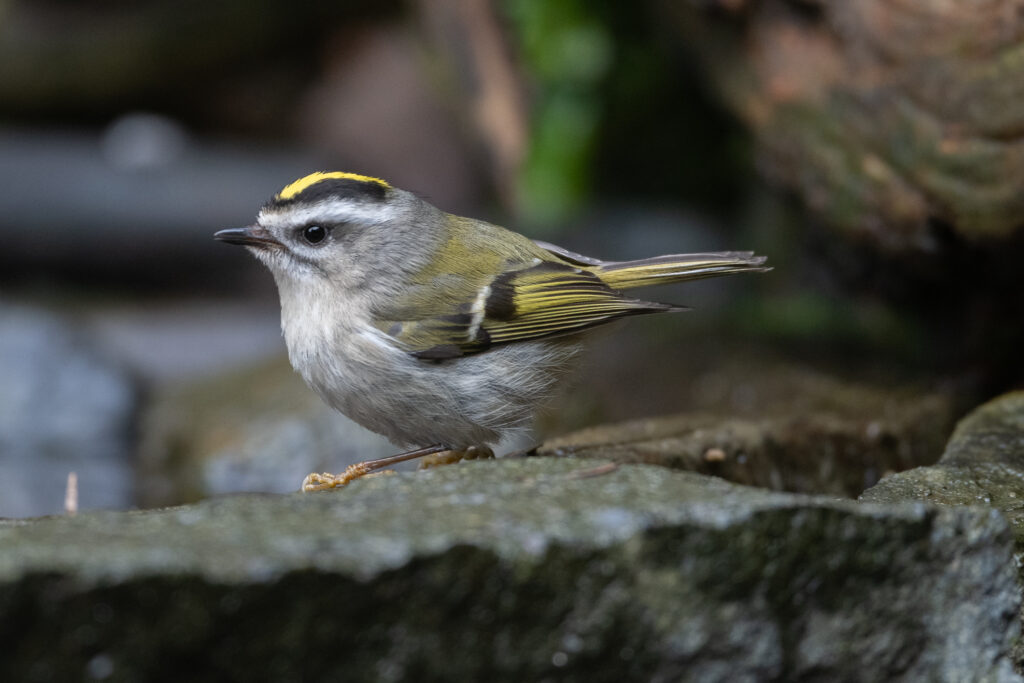
While on the subject of golden crowns, here are a couple of photos of Golden-crowned sparrows, of which we have a healthy population this winter.
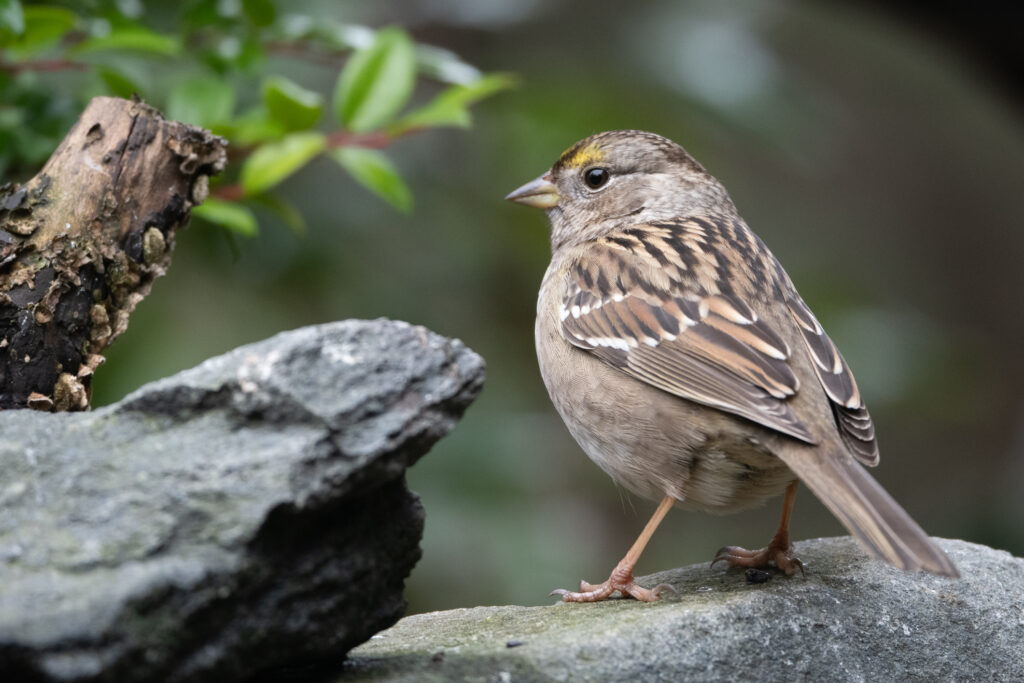
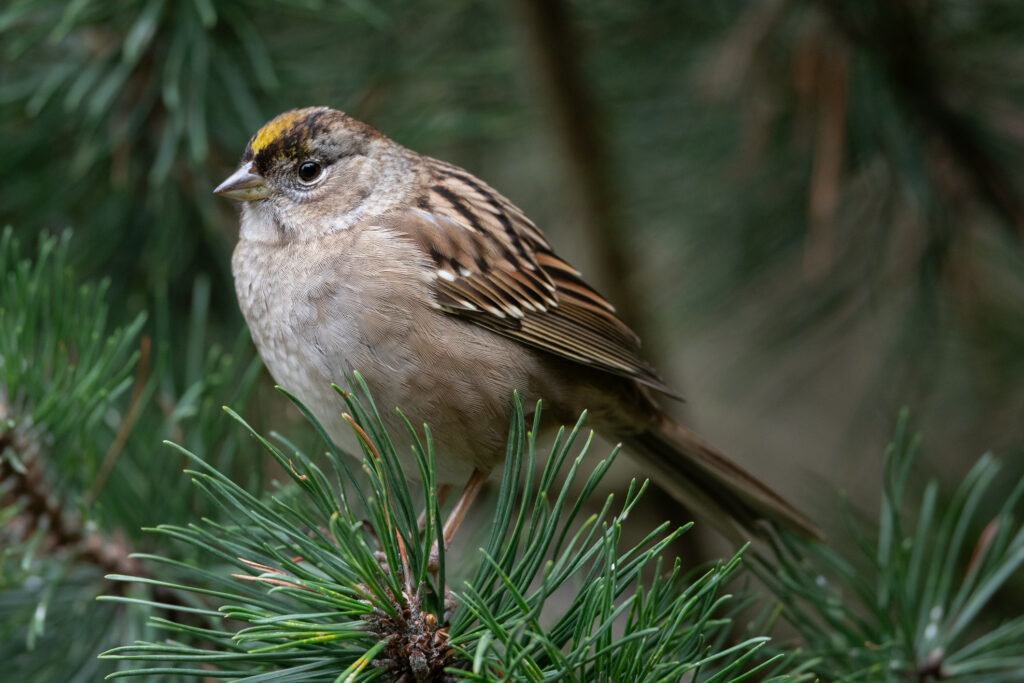
Another bird which I find difficult to photograph is the Red-breasted nuthatch. We never seem to have more than one or two visiting the yard and they too usually shun the water features that lend themselves to photography.
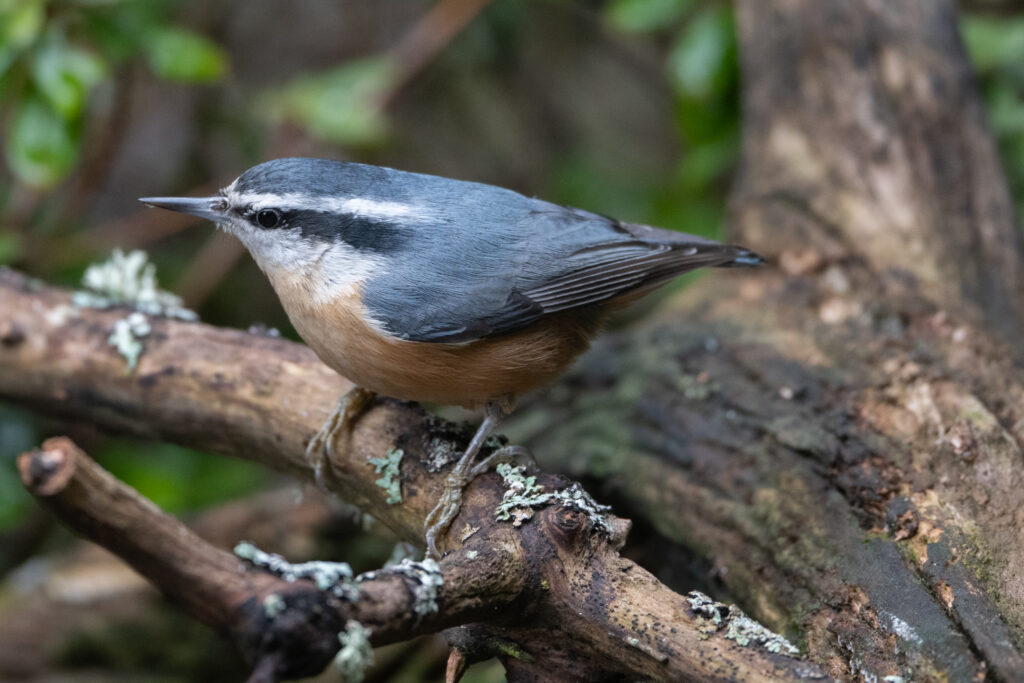
Here are polxotos of a male Dark-eyed Oregon junco that has been a visitor for several months now. It has lost the function of one leg and ‘skitters’ along the ground rather than hopping. It occasionally uses its lame leg for balance; but doesn’t use it for hopping. You can see in the second photograph that the bird is resting on its stomach instead of being supported fully by its feet. It flies well and when I’m outside I try to see that the bird gets its share of food.
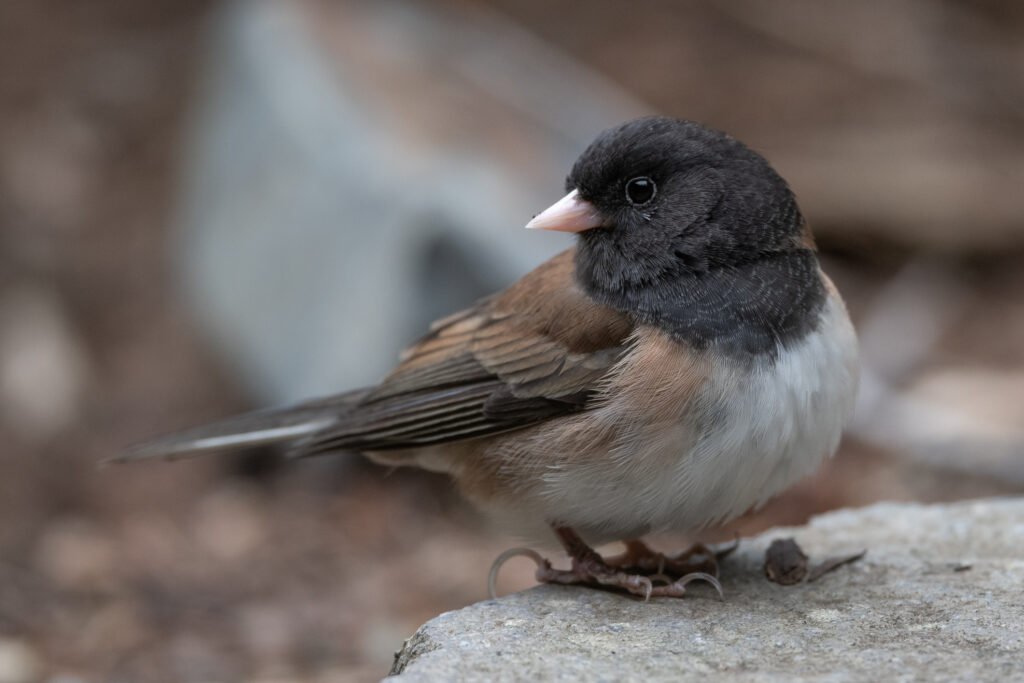
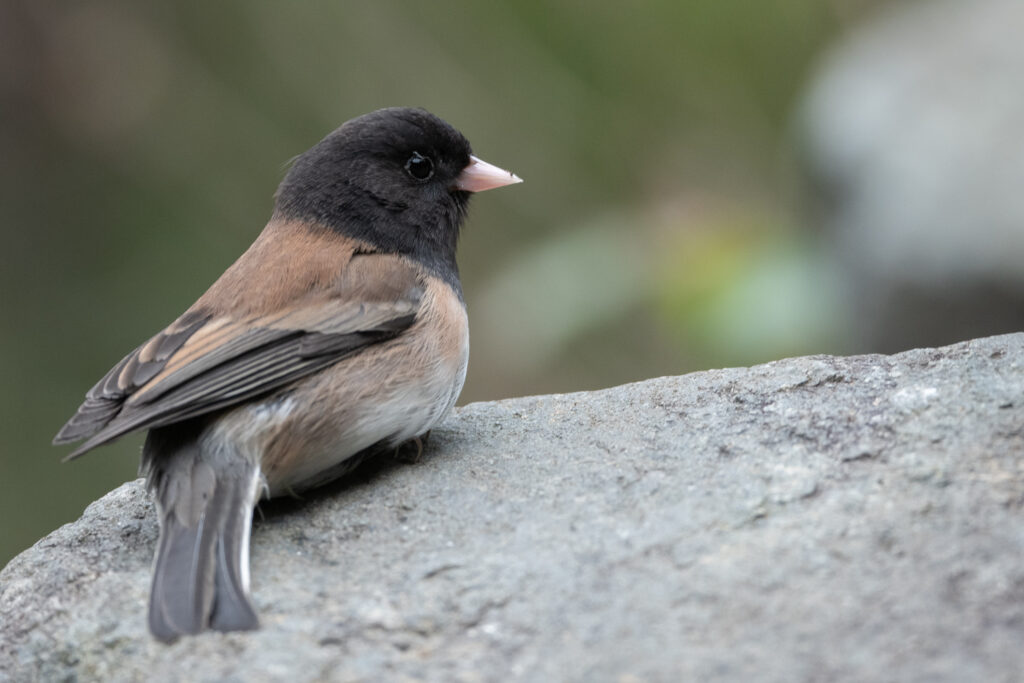
Another visitor of the past year is this male Spotted towhee that is usually around the yard. It has a crossed bill, much like a Red crossbill. I initially thought the bird might starve to death, but it seems to be existing quite well despite the handicap.
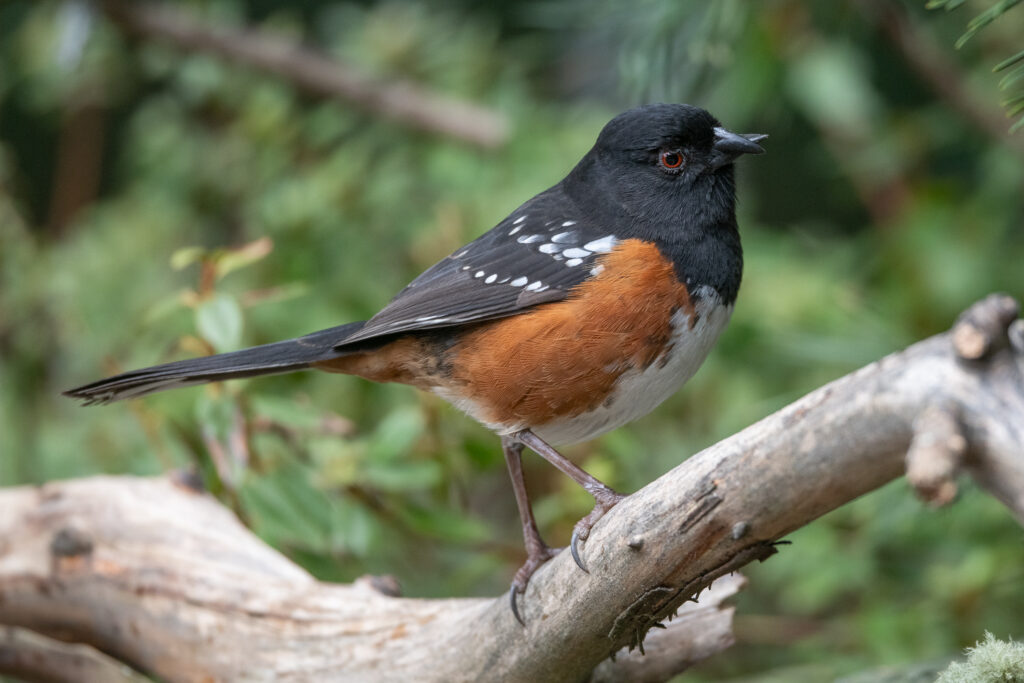
Here is a different male Spotted towhee without the handicap.
